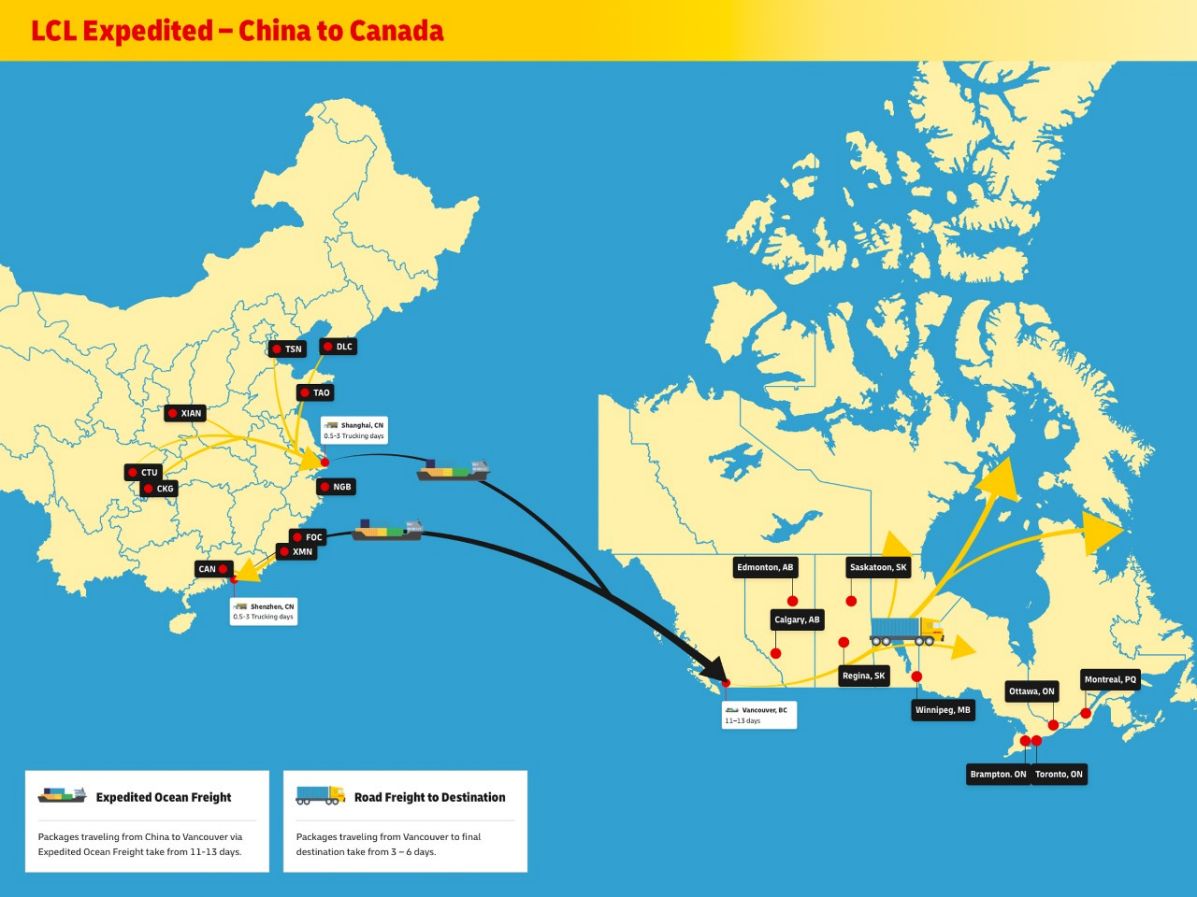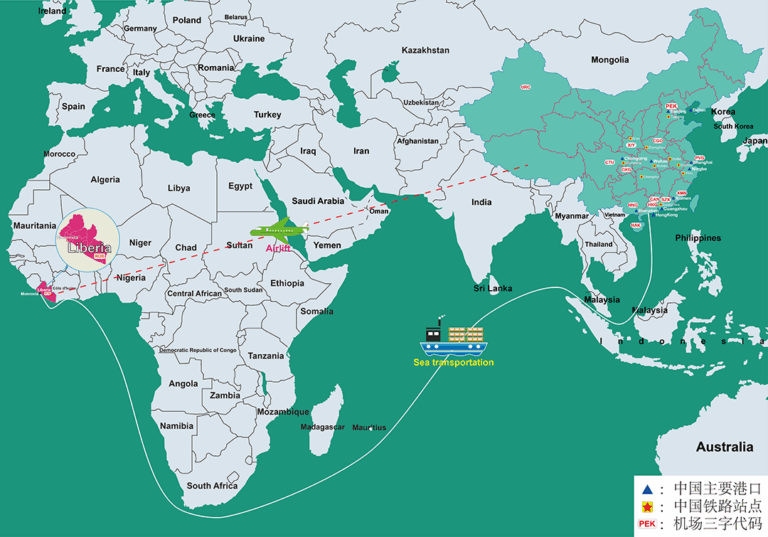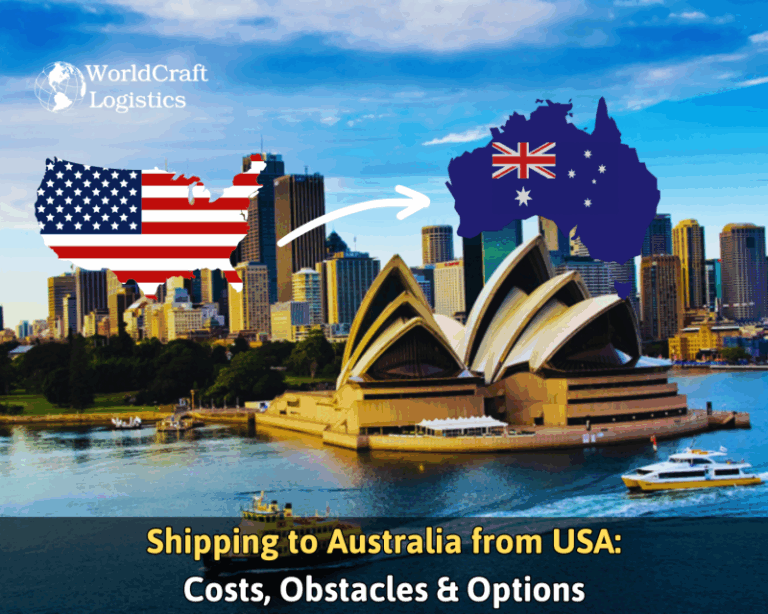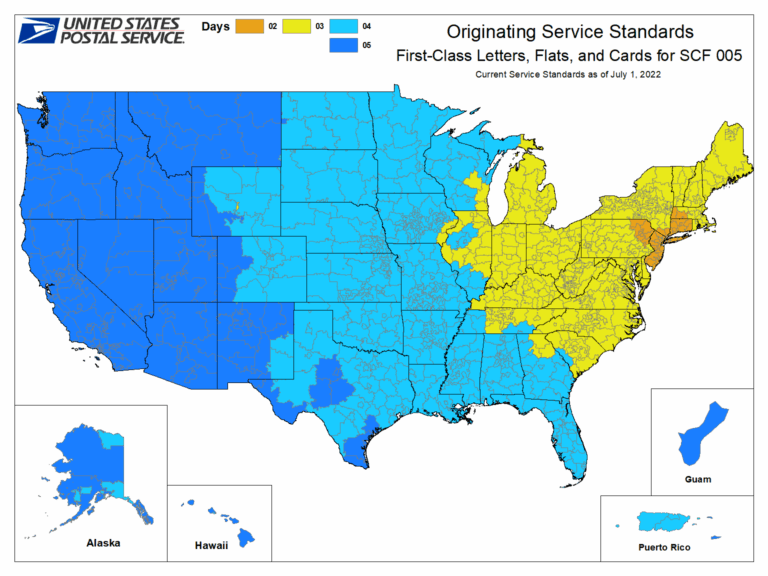The Definitive Guide to Shipping From China To Canada: Rates, Trans…
Your Complete Guide to shipping from china to canada
Navigating the Complexities of Shipping from China to Canada
Shipping goods internationally can be a daunting task, especially when dealing with the intricacies of transporting items from China to Canada. For businesses, the challenge lies not only in selecting the right shipping method but also in managing costs, understanding transit times, navigating customs regulations, and mitigating potential risks. As global trade continues to evolve, staying informed about these elements is crucial for any importer or exporter looking to streamline their supply chain.
One of the primary hurdles businesses face is the variety of shipping options available. Should you choose ocean freight or air freight? Each method has its unique advantages and disadvantages, impacting both delivery speed and overall costs. For instance, air freight is faster but often comes with a higher price tag, while ocean freight offers cost savings for larger shipments but requires a longer transit time. Understanding these nuances will allow you to make informed decisions that align with your business needs.
Cost is another significant concern. Freight rates fluctuate based on various factors, including shipment size, weight, and seasonal demand. By mastering the cost structures associated with different shipping methods, you can optimize your budget and avoid unexpected expenses. This guide will break down typical costs associated with various shipping modes, helping you to find the most economical solutions for your specific shipments.
Transit times can greatly affect your business operations. Knowing how long it typically takes for goods to arrive in Canada from China—whether through standard shipping or express services—enables you to plan your inventory and customer commitments effectively. This guide will provide you with realistic transit time estimates based on shipping methods, so you can set accurate expectations for your stakeholders.
Customs regulations can also pose challenges, as they vary by country and can lead to delays if not properly navigated. Understanding the necessary documentation and compliance requirements for shipping goods to Canada is essential to avoid potential pitfalls that could disrupt your supply chain.
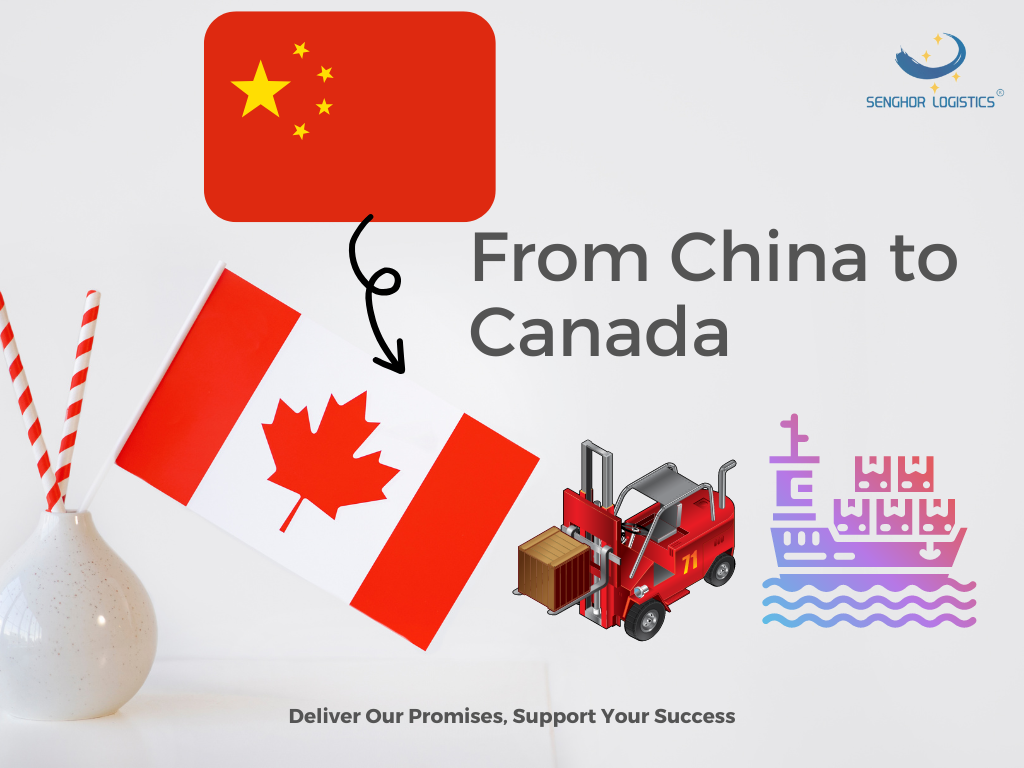
Lastly, there are inherent risks in international shipping, from potential damage during transit to unforeseen delays at customs. This guide will equip you with strategies to mitigate these risks, ensuring your goods reach their destination safely and on time.
By the end of this comprehensive guide, you will gain the expert knowledge needed to navigate the complexities of shipping from China to Canada efficiently. Whether you are an established importer or a new business owner venturing into international trade, this resource will provide you with the tools to make informed decisions and enhance your shipping strategies.
Table of Contents
- Your Complete Guide to shipping from china to canada
- Understanding Your Shipping Options: A Detailed Comparison
- Deconstructing the Cost: A Full Pricing Breakdown
- Transit Time Analysis: How Long Will It Take?
- Navigating Customs Clearance: A Step-by-Step Guide
- A Practical Guide to Choosing Your Freight Forwarder
- Incoterms 2020 Explained for Shippers
- Risk Management: Identifying and Mitigating Common Shipping Problems
- Frequently Asked Questions (FAQs) for shipping from china to canada
- Conclusion: Key Takeaways for Successful Shipping
- Important Disclaimer
Understanding Your Shipping Options: A Detailed Comparison
Overview of Shipping Methods from China to Canada
When shipping goods from China to Canada, businesses face a myriad of choices. The decision on which shipping method to use hinges on various factors, including cost, urgency, and the nature of the cargo. Below is a comprehensive comparison table that outlines the primary shipping methods available for international shippers.
| Shipping Method | Best For | Speed | Cost Level | Key Advantages | Key Disadvantages |
|---|---|---|---|---|---|
| Sea FCL | Large, bulk shipments | 30-40 days | Low (per unit) | Cost-effective for large volumes, dedicated space | Longer transit time, potential delays at ports |
| Sea LCL | Smaller, consolidated shipments | 35-45 days | Moderate | Flexibility for smaller shipments, lower costs | Longer handling time, risk of damage during consolidation |
| Air Freight | Urgent, high-value items | 3-10 days | High | Fastest delivery method, reliable | Expensive, limited weight and size capacity |
| Rail Freight | Bulk shipments, landlocked | 10-20 days | Moderate | Eco-friendly, good for heavy loads | Limited routes, slower than air |
| Express Shipping | Small packages, urgent needs | 1-3 days | Very High | Quickest delivery, door-to-door service | Very expensive, weight limits apply |
Detailed Breakdown of Each Method
Sea Freight – Full Container Load (FCL)
What It Is:
FCL shipping involves a dedicated container for your shipment, which means you pay a flat rate for the entire container regardless of whether it is fully loaded.
When to Use:
Ideal for businesses shipping large volumes of goods or bulky items that can fill a container.
Pros:
– Economical for large shipments; the cost per unit decreases as volume increases.
– Direct shipping reduces handling, minimizing the risk of damage.
Cons:
– Longer transit times (30-40 days) compared to air freight.
– Potential delays at ports due to customs or congestion.
Sea Freight – Less than Container Load (LCL)
What It Is:
LCL shipping consolidates multiple smaller shipments into one container. You share space with other shipments, which can save costs.
When to Use:
Best suited for smaller shipments that do not require a full container.
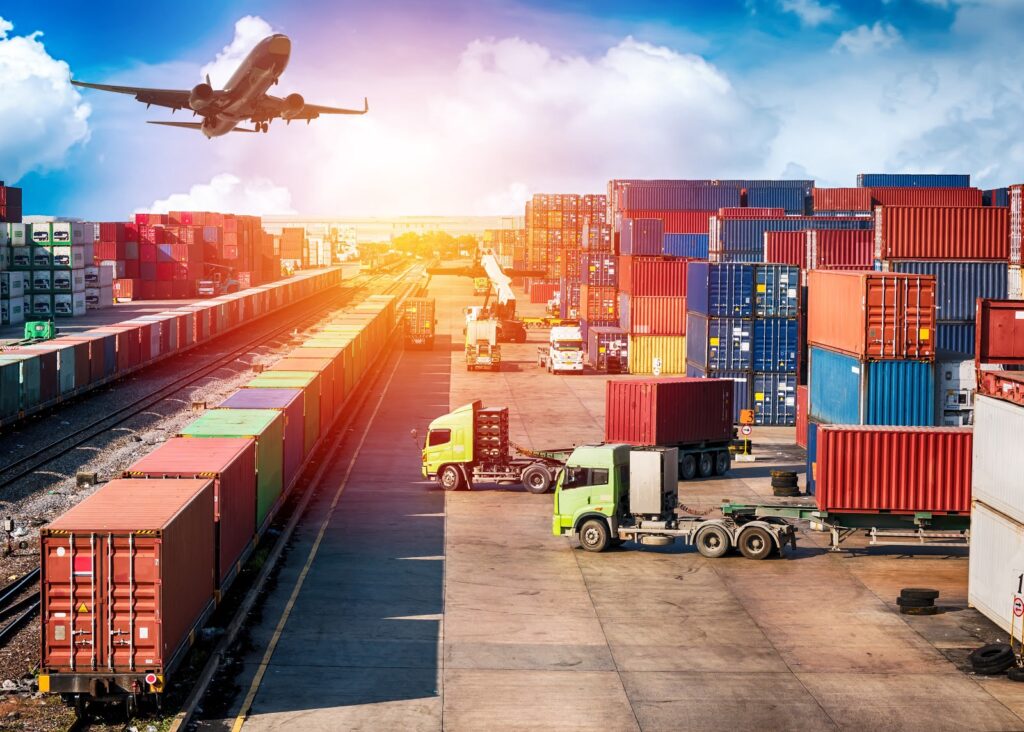
Pros:
– Cost-effective for small shipments.
– Flexibility allows for shipping smaller volumes.
Cons:
– Longer lead times due to consolidation and deconsolidation processes (35-45 days).
– Increased risk of damage as goods are handled more frequently.
Air Freight
What It Is:
Air freight involves shipping goods via commercial airlines, making it the fastest method for international shipping.
When to Use:
Best for urgent shipments, high-value items, or perishable goods.
Pros:
– Fast delivery times (3-10 days).
– Reliable and efficient, with fewer delays than ocean shipping.
Cons:
– Higher costs, making it impractical for low-value items.
– Limited capacity in terms of weight and volume.
Rail Freight
What It Is:
Rail freight is used for shipping goods overland, often in combination with other transport modes.
When to Use:
Ideal for bulk shipments and goods moving between landlocked regions.
Pros:
– Eco-friendly and cost-effective for large shipments.
– Reliable schedules compared to trucking.
Cons:
– Limited routes and not as fast as air freight (10-20 days).
– Requires additional transport to and from rail terminals.
Express Shipping
What It Is:
Express shipping uses courier services to deliver packages quickly, often with door-to-door service.
When to Use:
Best for small, urgent packages that require immediate delivery.
Pros:
– Fastest shipping method available (1-3 days).
– Trackable and reliable service.
Cons:
– Very high costs, often prohibitive for larger shipments.
– Weight and size restrictions apply, limiting the type of goods that can be shipped.
Special Considerations
Multimodal Transport
Multimodal transport combines two or more modes of transportation for a single shipment. This approach can optimize costs and transit times, especially when shipping from China to Canada. For example, a shipment might be sent via rail to a port, then loaded onto a container ship for ocean transport, and finally delivered by truck to the destination.
Advantages:
– Increased flexibility in routing.
– Potential for reduced shipping costs.
Disadvantages:
– More complex logistics and coordination needed.
– Risk of delays at transfer points.
Specialized Options
-
Roll-on/Roll-off (RoRo): This method is used for vehicles and heavy machinery that can be driven on and off the vessel. It is cost-effective for transporting large vehicles but limited to specific ports.
-
Break Bulk Shipping: Used for oversized cargo that cannot fit into standard containers. This method can be more expensive and requires special handling but is necessary for certain types of shipments.
Conclusion
Choosing the right shipping method from China to Canada depends on your specific needs, including the nature of your goods, budget, and delivery timeline. Understanding the advantages and disadvantages of each shipping option allows businesses to make informed decisions that align with their logistical requirements. Whether opting for the cost-effectiveness of sea freight or the speed of air freight, careful planning and consideration will ensure a smoother shipping process.
Deconstructing the Cost: A Full Pricing Breakdown
Understanding the Costs Involved in Shipping from China to Canada
When considering shipping from China to Canada, it is essential to understand the various costs that come into play. The total shipping expenses can be divided into three primary categories: Main Freight, Origin Charges, and Destination Charges. Each component has its own set of factors that influence pricing.
Main Cost Components
Main Freight
Main freight costs are typically the most significant portion of your shipping expenses. They depend on the mode of transport selected—whether it’s ocean freight (FCL or LCL) or air freight. The primary factors influencing main freight costs include:
- Shipping Mode: Ocean freight is generally cheaper than air freight, especially for larger shipments. However, air freight is faster.
- Cargo Volume and Weight: The dimensions and weight of your shipment can affect costs. For instance, air freight often charges based on dimensional weight.
- Distance and Route: The specific shipping route and distance between ports can lead to variations in freight costs.
Origin Charges
Origin charges are incurred at the shipping point in China. These charges can vary based on the services required and include:
- Terminal Handling Charges (THC): Fees charged by the port for loading and unloading cargo.
- Documentation Fees: Costs related to preparing necessary shipping documents.
- Customs Clearance Fees: Charges for clearing goods through customs at the origin, which may involve inspections or additional documentation.
- Packing and Crating: Costs for packaging the goods properly for transport.
Destination Charges
Once your shipment arrives in Canada, destination charges apply. These are often influenced by:
- Unloading Fees: Charges for unloading the cargo at the destination port.
- Delivery Charges: Costs to transport goods from the port to the final destination.
- Customs Duties and Taxes: Import duties, taxes, and any brokerage fees necessary to clear customs in Canada.
- Warehouse Fees: If goods need to be stored temporarily upon arrival, warehousing costs can be incurred.
Detailed Cost Factor Analysis
Main Freight
The pricing of main freight is influenced by several elements:
- Type of Goods: Hazardous materials or oversized items may incur additional charges.
- Seasonality: Freight rates can fluctuate based on peak shipping seasons, such as the weeks leading up to Chinese New Year or the holiday shopping season.
- Fuel Prices: Increases in fuel costs can lead to surcharges in freight rates.
Origin Charges
Factors that can influence origin charges include:
- Port Facilities: Different ports may have varying terminal fees and handling charges.
- Documentation Complexity: More complex shipments may require additional documentation, increasing costs.
- Packaging Requirements: Specialized packing can lead to higher charges.
Destination Charges
Destination charges can be affected by:
- Local Regulations: Different provinces in Canada may have varying customs duties and taxes.
- Service Providers: Different freight forwarders may charge different rates for customs brokerage and delivery.
- Delivery Distance: The distance from the port to the final destination can significantly impact delivery charges.
Example Pricing Table
The following table provides a sample pricing estimate for shipping from China to Canada. Please note that these are estimates and actual prices may vary based on several factors.
| Shipping Mode | Container Size | Estimated Cost |
|---|---|---|
| Sea Freight | 20ft FCL | $2,500 – $3,500 |
| Sea Freight | 40ft FCL | $4,500 – $6,000 |
| Sea Freight | LCL (per cubic meter) | $150 – $250 |
| Air Freight | Cost per kg | $5.00 – $10.00 |
Disclaimer: The prices listed in the table are estimates and may vary based on specific shipment details, fluctuating market rates, and other factors. Always consult with a freight forwarder for precise quotes.
How to Reduce Costs
Reducing shipping costs is crucial for businesses looking to maximize their profitability. Here are some actionable tips:
-
Consolidate Shipments: If possible, combine smaller shipments into one larger shipment to take advantage of lower per-unit freight rates.
-
Negotiate Rates: Work with multiple freight forwarders and negotiate shipping rates. Building a relationship with a forwarder can also lead to better pricing over time.
-
Choose the Right Shipping Mode: Consider the urgency and weight of your shipment. For larger, less urgent shipments, ocean freight may be more economical than air freight.
-
Optimize Packaging: Use efficient packaging to reduce weight and dimensions, which can lower both freight and handling costs.
-
Stay Informed on Peak Seasons: Avoid shipping during peak seasons when rates are typically higher. Plan your shipments during off-peak times for better pricing.
-
Utilize Technology: Use freight rate comparison tools to find the best prices and keep track of shipping trends.
-
Consider Alternative Ports: Sometimes, shipping from or to alternative ports can result in lower costs. Evaluate if this option is feasible for your supply chain.
By understanding the cost components and utilizing these strategies, businesses can effectively manage their shipping expenses when importing goods from China to Canada.
Transit Time Analysis: How Long Will It Take?
Understanding Transit Times for Shipping from China to Canada
Shipping goods internationally involves a complex interplay of factors that can significantly impact transit times. When considering shipments from China to Canada, understanding these variables is crucial for effective logistics planning.
Factors Influencing Transit Time
- Shipping Mode:
- Air Freight: This method is the quickest, typically taking around 3 to 10 days. However, it is also the most expensive, making it ideal for time-sensitive shipments or high-value goods.
-
Sea Freight: This option is more economical for bulk shipments, with transit times ranging from 30 to 40 days. It’s suitable for larger volumes of goods but requires patience due to longer travel times.
-
Port Congestion:
-
Major shipping ports can experience congestion, especially during peak seasons such as the Chinese New Year or holiday shopping periods. Delays in loading and unloading can add days to the estimated transit time.
-
Customs Clearance:
-
Customs procedures can vary significantly. Efficient customs handling can expedite the release of goods, while complications or increased scrutiny can lead to delays. It’s essential to ensure all documentation is accurate and complete to minimize potential holdups.
-
Shipping Routes:
-
The chosen shipping route can also affect transit times. Direct routes typically offer faster delivery, whereas indirect routes may involve multiple stops, leading to longer shipping durations.
-
Weather Conditions:
- Seasonal weather patterns can disrupt shipping schedules. For instance, typhoons in Asia or winter storms in Canada can delay vessels or flights, impacting overall transit times.
Estimated Transit Time Table
Here is a summary of estimated transit times for common shipping routes from China to Canada:
| Origin | Destination | Sea Freight (Days) | Air Freight (Days) |
|---|---|---|---|
| Shanghai | Vancouver | 30-40 | 8-10 |
| Shenzhen | Toronto | 30-40 | 8-10 |
| Guangzhou | Montreal | 30-40 | 8-10 |
| Ningbo | Calgary | 30-40 | 8-10 |
| Qingdao | Ottawa | 30-40 | 8-10 |
Context and Explanation
The estimates provided in the table represent typical port-to-port transit times and do not account for any additional delays that may arise from customs processing or unforeseen circumstances. For instance, while air freight is generally faster, it can be subject to capacity issues, especially during peak seasons, leading to possible delays.
When planning shipments, businesses should account for these potential delays and consider adding buffer time to their logistics schedules. It’s advisable to maintain open lines of communication with freight forwarders to receive updates on shipment status and any potential delays that may occur.
In conclusion, understanding the variables that influence transit times can help businesses make informed decisions about their shipping strategies. Whether opting for air or sea freight, being proactive in planning can mitigate risks associated with delays and ensure a smoother shipping experience from China to Canada.
Navigating Customs Clearance: A Step-by-Step Guide
The Process Explained
Shipping goods from China to Canada involves navigating a complex customs clearance process. Understanding this workflow is essential for ensuring a smooth transit of your goods. Below are the key steps involved in customs clearance:
-
Preparation of Documentation: Before your shipment arrives in Canada, ensure all necessary documents are prepared and ready. This includes invoices, packing lists, and other required paperwork.
-
Arrival Notification: Once your goods arrive at a Canadian port, the customs authorities will notify you or your customs broker. This step typically involves a review of the shipping documents.
-
Customs Declaration Submission: A customs declaration must be submitted, detailing the contents of your shipment, the value of the goods, and the applicable HS codes. This is usually done by a licensed customs broker.
-
Duties and Taxes Assessment: Customs will assess any applicable duties and taxes based on the declared value and HS codes. You will be required to pay these before your goods can be released.
-
Customs Inspection (if applicable): In some cases, customs may inspect the shipment to ensure compliance with regulations. If any discrepancies are found, this may delay the clearance process.
-
Release of Goods: Once all documentation is verified and duties paid, customs will authorize the release of your goods. You can then arrange for delivery to your specified location.
-
Post-Clearance Compliance: After your shipment is cleared, maintain all records and documentation for potential audits or compliance checks in the future.
Essential Documentation
Having the correct documentation is crucial for a successful customs clearance process. Below are the essential documents needed for shipping from China to Canada:
-
Commercial Invoice: This document serves as a bill for the goods being shipped and includes information such as the seller and buyer details, description of the goods, unit prices, and total value. It is used by customs to assess duties and taxes.
-
Packing List: This document provides a detailed list of the items in your shipment, including dimensions, weight, and packaging type. It helps customs verify the shipment’s contents against the commercial invoice.
-
Bill of Lading (BOL): The BOL is a contract between the shipper and the carrier. It serves as a receipt for the goods and outlines the terms of transportation. It is crucial for both air and sea freight.
-
Import Declaration: This is a formal statement made to customs authorities that details the nature of the goods being imported. It includes information about the HS codes, value, and country of origin.
-
Certificate of Origin: Depending on the type of goods and trade agreements in place, a certificate of origin may be required to determine the origin of the goods and to assess duties.
-
HS Codes: Harmonized System (HS) codes classify traded products for customs purposes. Accurate HS codes are essential as they determine the applicable duties and taxes.
Duties, Taxes, and HS Codes
Understanding duties and taxes is vital for budgeting your shipping costs. Here’s a breakdown of these components:
-
HS Codes: The Harmonized System (HS) is an internationally standardized system of names and numbers to classify traded products. Each product category has a unique HS code that helps customs authorities determine the correct tariff rates.
-
Duties: These are taxes imposed by the government on imported goods. The duty rate is determined based on the HS code assigned to the product. Duties can vary significantly based on the product type and its country of origin.
-
Taxes: In addition to duties, imported goods may be subject to sales tax (GST or HST) in Canada. The tax rate depends on the province to which the goods are being shipped.
Calculating the total cost of duties and taxes involves multiplying the declared value of the goods by the applicable duty rate and then adding any sales tax that may apply.
Common Problems & Solutions
Navigating customs clearance can present several challenges. Here are some common issues and practical solutions to avoid them:
- Incomplete Documentation: Missing or incorrect documents can lead to delays in customs clearance.
-
Solution: Double-check all required documentation before shipping. Consider hiring a customs broker to ensure compliance and completeness.
-
Incorrect HS Codes: Using incorrect HS codes can result in miscalculated duties and potential fines.
-
Solution: Research and verify the correct HS codes for your products. Utilize resources like the Canada Border Services Agency (CBSA) or consult with a customs expert.
-
Underestimating Duties and Taxes: Importers often fail to factor in the total duties and taxes, leading to unexpected costs.
-
Solution: Use an accurate freight calculator and consult with your customs broker to estimate the total costs associated with your shipment.
-
Customs Inspections: Random inspections can delay the release of goods.
-
Solution: Ensure all documentation is thorough and accurate. Familiarize yourself with the customs regulations related to your products to minimize the likelihood of inspection.
-
Miscommunication with Freight Forwarders: Lack of clear communication can result in shipment delays or mismanagement.
- Solution: Maintain open lines of communication with your freight forwarder and customs broker. Provide them with all necessary information upfront to facilitate smoother coordination.
By following these guidelines and being proactive in your approach to customs clearance, you can streamline the process of shipping goods from China to Canada, minimizing delays and ensuring compliance with all regulatory requirements.
A Practical Guide to Choosing Your Freight Forwarder
Understanding Key Qualities in a Freight Forwarder
When selecting a freight forwarder for shipping from China to Canada, it’s crucial to consider several key qualities that can significantly impact your shipping experience. Here are the essential attributes to look for:
-
Experience and Expertise: Choose a forwarder with a proven track record in international shipping, particularly between China and Canada. Their familiarity with specific trade regulations, customs procedures, and logistical challenges can save you time and money.
-
Global Network: A well-established freight forwarder should have a robust network of agents, carriers, and partners across major shipping routes. This network can provide you with more options for shipping methods, potentially leading to better rates and more reliable service.
-
Licensing and Compliance: Ensure that the freight forwarder is licensed and compliant with international shipping regulations. They should hold necessary certifications, such as the International Air Transport Association (IATA) for air freight and the Federal Maritime Commission (FMC) for ocean freight.
-
Strong Communication Skills: Effective communication is key to a successful shipping experience. Your forwarder should be responsive and provide timely updates on shipment status, customs documentation, and any potential delays.
-
Technology Integration: A modern freight forwarder will utilize technology to streamline the shipping process. Look for platforms that offer tracking systems, real-time updates, and easy access to shipment documentation.
Sourcing Checklist for Selecting Your Freight Forwarder
Choosing the right freight forwarder involves a systematic approach. Here’s a sourcing checklist to guide your decision-making process:
-
Define Your Needs: Assess your shipping requirements, including the type of goods, volume, shipping frequency, and delivery timelines. Understanding your specific needs will help you find a forwarder that can accommodate them effectively.
-
Research Potential Forwarders: Look for freight forwarders specializing in shipping from China to Canada. Use online resources, industry directories, and trade forums to compile a list of candidates.
-
Request Quotes: Contact shortlisted forwarders to request quotes. Provide them with detailed information about your shipments to receive accurate pricing. Compare these quotes not just on cost, but also on the services included.
-
Ask Questions: Engage potential forwarders in discussions. Ask about their experience with similar shipments, their customs clearance processes, and their handling of unforeseen issues. Their responses can give you insight into their operational capabilities.
-
Check References: Request references from previous clients. A reputable freight forwarder should be willing to provide testimonials or case studies that highlight their reliability and effectiveness.
Red Flags to Watch Out For
While evaluating freight forwarders, be vigilant for warning signs that may indicate potential problems. Here are some red flags to consider:
-
Lack of Transparency: If a forwarder is unwilling to provide clear information about pricing, services, or contracts, it may indicate hidden fees or unreliable practices.
-
Poor Communication: Delayed responses or vague answers to your inquiries can be a sign of unprofessionalism. A reliable forwarder should prioritize communication and keep you informed throughout the shipping process.
-
Limited Experience: Be cautious of forwarders with little experience in shipping from China to Canada. Inexperienced providers may struggle with customs regulations and logistics challenges.
-
No Proper Licensing: Ensure that the forwarder has the necessary licenses and certifications. If they cannot provide proof of compliance, consider it a significant risk to your shipment.
-
Negative Reviews: Research online reviews and testimonials. Consistent negative feedback regarding service quality, delays, or lost shipments should raise concerns.
-
High Pressure Tactics: Be wary of forwarders that push you to make quick decisions or pressure you into choosing their services without giving you adequate time to evaluate your options.
Conclusion
Choosing the right freight forwarder for shipping from China to Canada is essential for ensuring a smooth and cost-effective shipping process. By focusing on key qualities, following a structured sourcing checklist, and being aware of potential red flags, you can make an informed decision that aligns with your business needs. A reliable freight forwarder can become a valuable partner in your international shipping endeavors, helping you navigate the complexities of global logistics with confidence.
Incoterms 2020 Explained for Shippers
What are Incoterms?
Incoterms, short for International Commercial Terms, are a set of predefined international rules that define the responsibilities of buyers and sellers in the shipping process. Established by the International Chamber of Commerce (ICC), these terms clarify the division of costs, risks, and obligations between parties involved in the international sale of goods. They play a critical role in international trade, particularly when shipping from China to Canada, as they dictate who is responsible for freight costs, insurance, and the risk of loss or damage to goods during transit. Understanding Incoterms is essential for shippers, importers, and exporters to ensure smooth transactions and avoid potential disputes.
Key Incoterms Table
| Incoterm | Who Pays for Transport? | Where Risk Transfers? | Best for |
|---|---|---|---|
| EXW (Ex Works) | Buyer | At seller’s premises | Buyers who want maximum control over the shipping process |
| FOB (Free On Board) | Seller | Once the goods are loaded onto the vessel | Buyers looking for a balance between control and responsibility |
| CIF (Cost, Insurance, and Freight) | Seller | Once the goods are on board the ship | Buyers who prefer less involvement in shipping logistics |
| DDP (Delivered Duty Paid) | Seller | At the buyer’s location | Buyers wanting a hassle-free delivery with all costs included |
Detailed Explanation of Common Incoterms
EXW (Ex Works)
Under the EXW Incoterm, the seller makes the goods available at their premises or another named place (e.g., factory, warehouse). The buyer is responsible for all transportation costs and risks from that point forward. This term is ideal for buyers who want to have full control over the entire shipping process. For instance, if a company in Canada orders machinery from a manufacturer in China under EXW terms, they will need to arrange for transportation from the factory in China, handle all export duties, and manage the import process upon arrival in Canada.
FOB (Free On Board)
FOB indicates that the seller is responsible for all costs and risks until the goods are loaded onto the shipping vessel. After loading, the buyer assumes responsibility. This term is particularly advantageous for buyers who want to ensure that their goods are safely loaded but prefer to handle the shipping themselves. For example, a Canadian importer purchasing textiles from a factory in Shanghai may choose FOB terms. The seller will cover costs until the textiles are on the ship, while the buyer will manage freight to Canada and any associated import duties.
CIF (Cost, Insurance, and Freight)
CIF means the seller covers the costs of shipping, insurance, and freight until the goods reach the destination port. The risk transfers to the buyer as soon as the goods are loaded onto the vessel. This term is suitable for buyers who prefer a simpler shipping process and wish to mitigate risks associated with loss or damage during transit. For instance, a business in Toronto importing electronics from China under CIF terms would ensure that the seller organizes the shipping and insurance, allowing the buyer to focus on receiving the goods at the port without dealing with the complexities of transport logistics.
DDP (Delivered Duty Paid)
Under DDP, the seller takes on the maximum responsibility by delivering the goods to the buyer’s location, covering all costs including shipping, insurance, and import duties. The risk transfers once the goods are delivered to the buyer’s premises. This term is ideal for buyers who want a hassle-free experience and prefer not to deal with customs or additional shipping costs. For example, a Canadian retailer ordering furniture from a Chinese supplier on DDP terms would receive the furniture directly at their warehouse, with the seller managing all logistics and import duties, simplifying the process significantly.
Conclusion
Choosing the right Incoterm is crucial for businesses engaged in international shipping, particularly between China and Canada. Each term offers different levels of control, responsibility, and risk, allowing shippers to tailor their agreements to meet their specific needs. Understanding these terms can lead to more efficient logistics, reduced costs, and fewer disputes, ultimately enhancing the overall shipping experience.
Risk Management: Identifying and Mitigating Common Shipping Problems
Introduction
In the complex world of international shipping, particularly when moving goods from China to Canada, proactive risk management is vital for businesses aiming to protect their investments and maintain operational efficiency. The shipping process is fraught with potential challenges, including cargo damage, delays, and customs complications. A well-structured risk management plan not only helps identify these risks but also implements effective strategies to mitigate them, ensuring smoother operations and minimizing financial losses.
Risk Analysis Table
Understanding the potential risks associated with shipping is the first step in developing a comprehensive risk management strategy. Below is a table outlining common shipping risks, their impacts, and suggested mitigation strategies.
| Potential Risk | Impact | Mitigation Strategy |
|---|---|---|
| Cargo Damage | Financial loss, increased costs, reputation damage | Use robust packaging, conduct pre-shipment inspections, and consider cargo insurance. |
| Delays | Increased lead times, customer dissatisfaction | Choose reliable freight forwarders, track shipments in real-time, and plan for peak seasons. |
| Customs Holds | Financial penalties, shipment delays, lost sales | Ensure accurate documentation, hire a customs broker, and familiarize yourself with Canadian import regulations. |
| Transportation Disruptions | Increased costs, delivery delays | Maintain relationships with multiple carriers and have contingency plans for rerouting. |
| Regulatory Changes | Compliance issues, potential fines | Stay informed about changes in shipping regulations and engage with industry associations for updates. |
| Currency Fluctuations | Increased shipping costs, budget overruns | Lock in exchange rates using forward contracts and regularly review financial forecasts. |
Cargo Insurance Explained
Cargo insurance is an essential component of risk management in international shipping. It protects against the financial implications of loss or damage to goods while in transit. Understanding what cargo insurance covers, its various types, and its importance can significantly reduce the financial risks associated with shipping.
What It Covers
Cargo insurance typically covers:
- Physical Damage: Protection against damage due to accidents, theft, or natural disasters.
- Loss of Goods: Compensation for goods that are lost or cannot be accounted for during transit.
- Delay-Related Costs: Coverage for additional costs incurred due to delays in shipment.
Types of Cargo Insurance
- All-Risk Coverage: This comprehensive policy covers a wide range of risks, including damage, loss, and theft, except for specifically excluded items.
- Named Perils Coverage: This policy only covers risks specifically listed in the policy, such as fire or collision, making it more limited than all-risk coverage.
- Inland Marine Insurance: Covers goods while they are transported overland, offering protection during the entire shipping process, including transit to and from ports.
Why It’s Essential
- Financial Protection: Without cargo insurance, businesses risk significant financial losses in the event of unforeseen circumstances.
- Peace of Mind: Knowing that goods are insured can reduce stress and allow businesses to focus on other operational aspects.
- Enhanced Credibility: Having cargo insurance can enhance your credibility with clients and partners, demonstrating a commitment to risk management.
Conclusion
In the realm of international shipping from China to Canada, the importance of proactive risk management cannot be overstated. By identifying potential risks and implementing effective mitigation strategies, businesses can safeguard their operations and ensure a smoother shipping experience. Additionally, understanding the value of cargo insurance serves as a crucial element in protecting against financial losses and enhancing overall business resilience. By taking these steps, shippers can navigate the complexities of international logistics more effectively and with greater confidence.
Frequently Asked Questions (FAQs) for shipping from china to canada
1. What are the main shipping options available for transporting goods from China to Canada?
The primary shipping options for transporting goods from China to Canada include ocean freight (both Full Container Load – FCL and Less than Container Load – LCL), air freight, and express shipping services. Ocean freight is typically more economical for larger shipments, while air freight is faster and suitable for smaller, time-sensitive shipments. Express services, offered by couriers like DHL and FedEx, are ideal for urgent deliveries of small packages.
2. How long does it take to ship goods from China to Canada?
Transit times vary based on the shipping method. Generally, air freight takes about 3 to 10 days, express shipping can take 1 to 3 days, and ocean freight typically ranges from 30 to 40 days. However, these times can be affected by factors such as customs clearance, seasonal demand, and potential delays at ports.
3. How are shipping costs calculated when shipping from China to Canada?
Shipping costs are determined by multiple factors, including the shipping method (air vs. ocean), the weight and dimensions of the shipment, the distance to the destination, and any additional services required (like insurance or customs clearance). For air freight, costs may also depend on the dimensional weight, which can be higher than the actual weight for lightweight shipments.
4. What is the difference between a Bill of Lading (BOL) and an Air Waybill (AWB)?
A Bill of Lading (BOL) is a document used in ocean freight that serves as a receipt for the cargo and a contract between the shipper and the carrier. It can also confer title to the goods. In contrast, an Air Waybill (AWB) is specific to air freight and acts as a receipt and a contract of carriage but does not confer title. AWBs are non-negotiable, while BOLs can be transferred to others.
5. Are there any customs regulations or duties I need to be aware of when importing from China to Canada?
Yes, all shipments entering Canada must clear customs and may be subject to duties and taxes based on the value and type of goods. Importers must provide accurate documentation, including invoices, packing lists, and any necessary permits. It’s advisable to consult with a customs broker to ensure compliance with all regulations and to facilitate the clearance process.
6. How can I track my shipment from China to Canada?
Most freight forwarders and shipping companies provide tracking services that allow you to monitor the status of your shipment in real-time. You will typically receive a tracking number that can be used on the carrier’s website to check the location and estimated delivery time of your cargo.
7. What should I do if my shipment is delayed?
If your shipment is delayed, first check the tracking information provided by your carrier. If the delay is not explained, contact your freight forwarder for assistance. They can provide insights into the cause of the delay, whether it be customs issues, weather conditions, or logistical challenges, and advise on the next steps.
8. What is chargeable weight, and how is it calculated?
Chargeable weight is the weight used by carriers to determine the shipping cost. It can be based on either the actual weight or the dimensional weight, whichever is greater. Dimensional weight is calculated by multiplying the dimensions of the package (length, width, height) and dividing by a dimensional factor set by the carrier. This ensures that lighter, bulkier packages are charged appropriately.
9. What types of goods are restricted or prohibited when shipping from China to Canada?
Certain goods may be restricted or prohibited from import into Canada, including hazardous materials, counterfeit items, and certain agricultural products. It’s important to research and verify the regulations related to your specific products to avoid delays or confiscation at customs.
10. How can I minimize shipping costs when importing from China to Canada?
To minimize shipping costs, consider consolidating shipments to fill a container (FCL), using ocean freight for larger shipments, and negotiating rates with multiple freight forwarders. Additionally, shipping during off-peak seasons, choosing the appropriate shipping method based on urgency, and ensuring accurate weight and dimensions can also help reduce costs.
Conclusion: Key Takeaways for Successful Shipping
Strategic Planning is Essential
Successfully shipping goods from China to Canada requires meticulous planning. Start by defining your shipping goals, understanding the nature of your products, and determining the most suitable shipping mode—whether it’s air freight for speed or ocean freight for cost-effectiveness. Assess the volume of your shipment to choose between Full Container Load (FCL) and Less than Container Load (LCL), as this decision significantly impacts both transit time and shipping costs.
Choose the Right Partners
Selecting a reliable freight forwarder is crucial to navigating the complexities of international shipping. Look for partners with extensive experience in the China-Canada route, and consider their network, customer service, and technology capabilities. A good freight forwarder will not only help manage logistics but also provide valuable insights into customs regulations and best practices, ensuring compliance and minimizing delays.
Understand Costs and Timing
Shipping costs can fluctuate based on several factors, including the shipping mode, seasonality, and market conditions. Regularly compare quotes from different freight forwarders to secure the best rates. Remember that shipping times can vary; therefore, always factor in potential delays due to customs or seasonal disruptions. Generally, air freight is faster but more expensive, while ocean freight offers savings for larger shipments, albeit with longer transit times.
Call to Action
In conclusion, successful shipping from China to Canada hinges on thorough planning, strategic partnerships, and a keen understanding of costs and timelines. By applying these key takeaways, you can streamline your shipping process, reduce costs, and enhance your overall supply chain efficiency. Ready to take the next step? Start evaluating your shipping options today and connect with a trusted freight forwarder to ensure your goods reach their destination smoothly and on time!
Important Disclaimer
⚠️ Important Disclaimer
The information in this guide is for educational purposes only and does not constitute professional logistics advice. Rates, times, and regulations change frequently. Always consult with a qualified freight forwarder for your specific needs.
